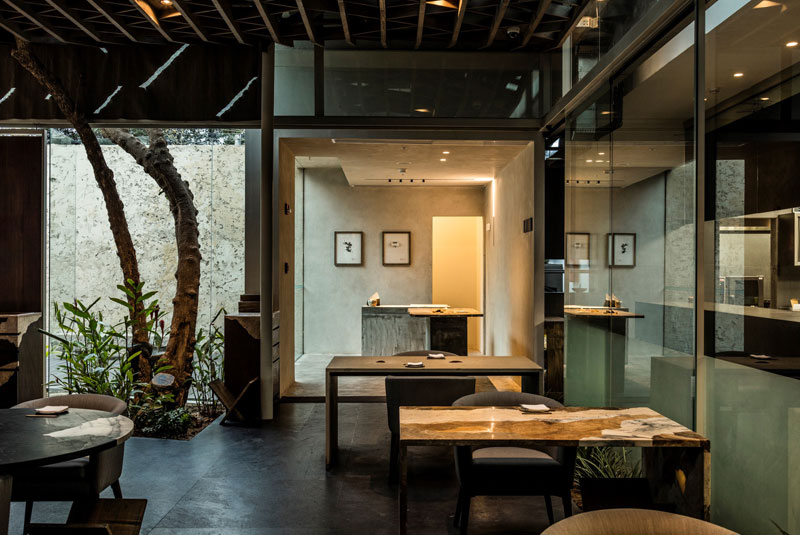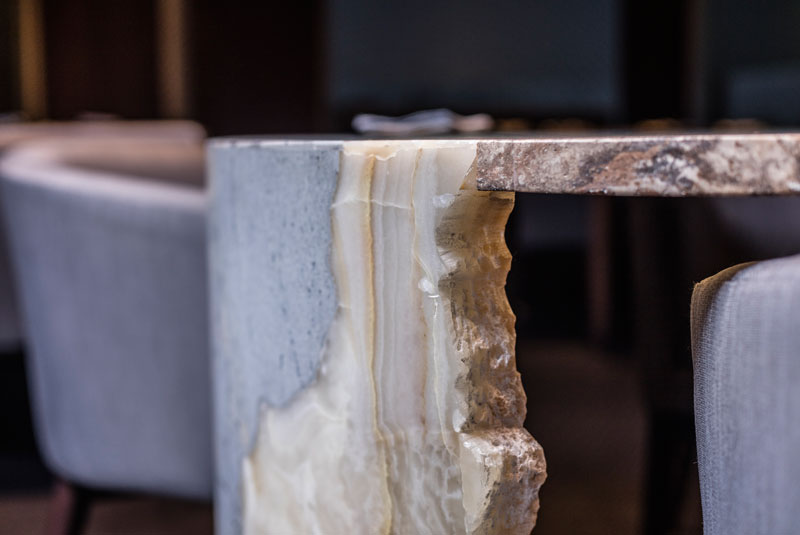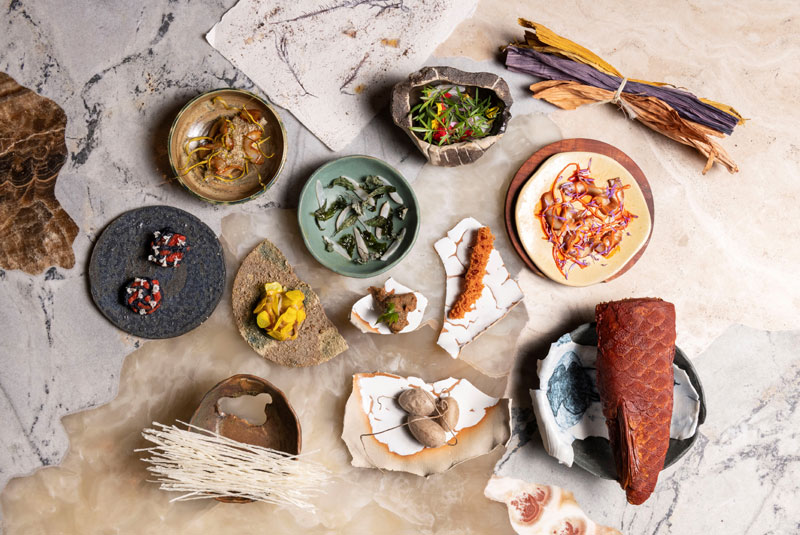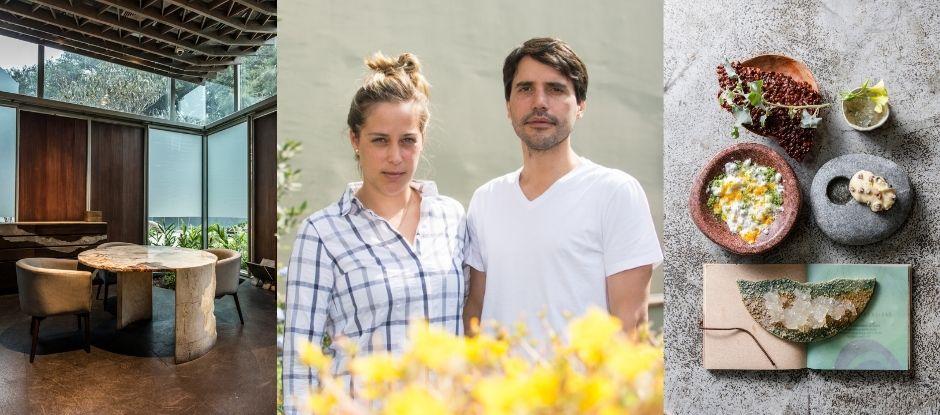More than a decade after Central’s opening in the Peruvian capital of Lima, the husband-and-wife team of Virgilio Martínez and Pía León shows no signs of slowing down. After moving the restaurant to a new location in 2018, and opening Mil in the Andes and the León-led Kjolle in Lima in the same year, they bagged the Gin Mare Art of Hospitality Award at Latin America’s 50 Best Restaurants 2020, sponsored by S.Pellegrino & Acqua Panna. We speak to the chefs about what makes Central’s hospitality philosophy unforgettable, how they still manage to wow diners and what’s next for the first couple of Latin American restaurants
How do the worlds of the kitchen and the dining room interact at Central?
Virgilio Martínez: For a while now, we have been working to make it that these two worlds aren’t seen as separate. And beyond that, we realised that the first contact people have with Central is also through social media, news or word of mouth. Hospitality comes in through all these channels, to see it in terms of ‘kitchen’ and ‘dining room’ is a bit limiting. We should see hospitality from the first message that reaches the person, to cater to their expectations and make their experience much better than they expect. We already know that people come for certain things they know about Central. The idea is to show them things they don't know and experience something they've never seen before.
What is your style of service?
Pía León: We have chosen to have a very friendly service, to not be too rigid or take it too seriously. It’s a fluid, relaxed service, where you feel at home, which is what we want, but at the same time you learn. We offer a lot of information about the products you taste in the menu. We can adapt to diners’ requests, and we love doing it too, because it challenges us to try different things in the kitchen, and we also like going a little bit off-line.
VM: That is true hospitality, because if there is a person at the restaurant who doesn’t eat meat or fish, that’s when we must act without making them feel that they have restrictions. It's like saying: “Don't worry, we have something for you”. The space we have, and being in the district of Barranco, also gives this feeling that every touch, every detail is handmade, always looking for beautiful and fine things and looking for luxury in unexpected places.
Inside Central in Lima, Peru
How do you convince diners to try the unusual products on your menus, such as piranhas?
VM: There is a certain pleasure in people trying and experiencing something new if you’re there to hold their hand. Whether it’s a fish from the Amazon, a root or a tuber they have never seen before, the idea is that we’re here to explain where they come from, how they get here, who brings them. This holding of hands is important and it’s also where informality plays a positive role.
You are known for highly customised dining experiences. How do you achieve this?
PL: We put a lot of focus on the internal communications between the teams in charge of Mil, Central, Kjolle and Mayo. Often, those who visit us end up doing the whole tour, from Casa Tupac to Mil. So we are very attentive to the experiences in each space and that’s there we make the difference, because if someone ate at Central and then they go to Mil, we make links between the things they experienced.
VM: We use the information we have about the diners to please them, to make them feel more than just at home, to welcome them into a world that surprises them and that is very much related to the concept of the restaurant, which is an exploration, a journey through the ecosystems of Peru.
How will you create the experience at Maz, the restaurant you plan to open in Tokyo in 2021?
VM: We feel that the philosophy we work with here is one that we can replicate, while also adapting it. We talk a lot about terroirs and ecosystems, and nature in Japan has a lot to offer. We don't want to reinvent Japanese cuisine. We want to take the tasting experience that is already formulated and practiced here and adapt it to the country’s seasonal products. We are betting on a different and unique proposal. We have a lot of respect for Japanese cuisine – for us it's an honour to be in Tokyo.

Amazonian waters (carachama, mishkina, ayrampo)
What inspires your hospitality philosophy?
VM: The fact that our passion needs to be ignited. We wouldn’t be able to look after people with a smile and good vibes, we wouldn’t be able to work on details that are sometimes imperceptible – in order to deal with all this, we need to be happy and make our work sustainable. We put a special focus on the relationship between workers, the relationship with customers, the relationship with the new challenges that are coming.
Before entering Central, diners walk through a garden with over 100 vegetable species – what’s its purpose?
PL: You come in through Barranco, which is this beautiful city avenue, and the idea is that that garden transports you to a place that is closer to nature. We divided it into the area of the Andes, the coast and the Amazon, and in each space, you find products from each region.
VM: As we are in Lima, which is in a desert, there are not many green areas. So we wanted to create a space that speaks of Peru, because Peru is not just Lima. It talks about the vegetable world, the mountains, the Andes and the Amazon, places that people often have not seen before.
How do you make the experience at Central unforgettable?
VM: It’s unforgettable because of the number of exciting things it makes you feel. You don't just remember the dish, but also the gestures, the people's faces, the person who met you at the door. This creates bonds that you might not have expected. Maybe you already knew something about the concept of Central, but you didn't realise that there was so much of this human factor. This informality and casual way of looking after you, talking to you and opening our doors to you – Kjolle, Mayo, the garden, the Mater Iniciativa research centre, you can go everywhere – is very important.
Detail of a table at Central
How does your team interact with the customers during the tasting menu experience?
PL: It is key for the team not only to know and have information, but to feel it. There is a lot of interaction with the kitchen – the cooks themselves explain and finish dishes at the table. Those who visit us like this closeness very much.
VM: The front of house team has trained in this so much that it's really their knowledge that flows. If they talk about a vegetable, it is because they have touched it, seen it, had a connection with it. It must be real. Hospitality is about how real and authentic we are. We don't want it to be an act. There are also many times when we don't have a protocol in place, we understand that all services are different. Our diners are strangers we are going to meet during the service, and we must act differently according to the people who come.
When you reopened Central after the lockdown, you also started a project called RE.Barranco, where you hosted different local restaurants at your cocktail bar Mayo and served their dishes. Was this a way to extend your hospitality beyond diners to local restaurants too?
VM: RE.Barranco was a way of reactivating Barranco, the cultural-artistic district that we feel such a strong responsibility to stay active in, to keep the gastronomic community active and also to give people the opportunity to try other restaurants. Previously, we weren’t very connected to our neighbours; we didn't have time to do things together. Then suddenly, this opportunity appeared and we took it. It was a fantastic way to reconnect with the restaurant community in Barranco and Miraflores and to make way for them in our place.
Amazonian river fishes (cecina, paiche, pitucañame)
What’s next for you?
VM: When, five years ago, 50 Best asked us what was next for Central, we were spending more time in the Andes, but we hadn't yet opened Mil. Now we are travelling more to the Amazon and we still have plans to open there. Mil, the Andes and altitude cuisine influenced us a lot, but all this mysticism and richness of the Amazon is a whole world that we are still discovering. Having a research base there is our next step, and with that we will have more work, more knowledge, more surprises and more systems of progression.
We also feel that the team is building a greater knowledge of what Central is and what it stands for, that there is even more strength there. Even though the gastronomic world is going through a terrible situation at the moment, we feel that we still have a lot to give.
Go inside Central and meet the chefs in the video:
Discover the full list of Latin America’s 50 Best Restaurants 2020, sponsored by S.Pellegrino & Acqua Panna, on the website, and stay tuned for more interviews with this year’s award winners. Follow us on Facebook, Instagram, Twitter and YouTube for the latest news, features and videos.

